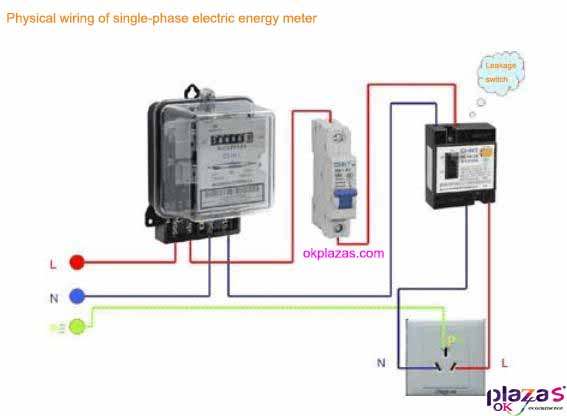How do the power meters see the degree parameters Wiring diagram of electric energy meter
How do the power meters see the degree parameters Wiring diagram of electric energy meter
How do the power meters see the degree parameters Wiring diagram of electric energy meter
1. The main parameters and significance of the electric energy meter
1. Voltage parameter: indicates the voltage of the applicable power supply. The single-phase voltage of our low-voltage working circuit is 220V, and the three-phase voltage is 380V. The 220V calibrated electric energy meter is suitable for single-phase general lighting circuits. The 380V watt-hour meter is suitable for industrial and agricultural production circuits using three-phase power supply.
2. Current parameters: There are two current parameters for general ammeters. For example, 10 (20) A, one is the calibrated working current Ib (10A) that reflects the measurement accuracy and starting current index, and the other is the maximum current Imax (20A) that is allowed to pass under the condition of meeting the measurement standard requirements. If the current in the circuit exceeds the maximum allowable current Imax, the energy meter will be inaccurate or even damaged.
3. Power frequency: indicates the frequency of the applicable power source. The frequency of the power supply indicates the number of times the direction of the alternating current changes within 1s. The frequency of alternating current in our country is specified as 50 Hz. The direction of the AC current changes. The speed of this change is very important for demanding precision instruments (such as X-ray machines, etc.), and the impact on electrical appliances that do not require high power frequency such as lighting or electric heaters can be ignored. .
4. Power consumption measurement parameters: different electric energy meters have different expressions. The standard measurement parameter of the turntable induction system electric energy meter is xxxr/kWh, which means that for every 1kWh of electric energy consumed by the electrical appliance, the aluminum turntable of the electric energy meter needs to rotate xxx revolutions. The measurement parameter of the electronic electric energy meter is marked as xxximp/kWh, which means that for every 1kWh of electric energy consumed by the electrical appliance, the pulse count of the electric energy meter generates xxx pulses.
5. In addition, the electric energy meter also has parameters such as working environment temperature, humidity parameters and accuracy grade.
Second, the application of electric energy meter parameters
1. Select the voltage parameter of the electric energy meter according to the working voltage of the electrical appliance. If the electrical appliances in the circuit use 220V power supply, choose an electric energy meter with a nominal voltage of 220V, otherwise, choose an electric energy meter with a nominal voltage of 380V.
2. The selection of current parameters depends on the size of the circuit load. The load of the circuit can be calculated according to the total power of the electrical appliances in the circuit (I=Ptotal/U). With the continuous improvement of living standards, the number of household appliances, especially high-power household appliances, is increasing. There should be room for selecting the current parameters of the electric energy meter so that it can still be used normally when high-power appliances are added in the future.
3. Use the metering parameters of the electric energy meter to measure the actual power of electrical appliances. Take the measurement parameters of the induction electric energy meter as an example to measure the actual power. The metering parameter xxxr/kWh means that for every 1kWh of electric energy consumed by the electrical appliance, the aluminum turntable of the electric energy meter needs to rotate xxx revolutions. Turn off other electrical appliances in the circuit, and only allow the electrical appliance under test to work, and record the number of revolutions n of the aluminum turntable (to ensure accuracy, generally n is 20=30). The electric energy consumed in time t is nkWh/xxx. According to P=W/t, the power can be obtained, P=W/t=nkWh/xxxt. It should be pointed out that the units must be unified. If the electric energy uses kWh as the unit, the time unit is h; if the electric energy uses J as the unit, the time unit is s.
3.Physical wiring diagram of electric energy meter

4. How to look at the electric energy meter?
The general electricity meter can directly read the total consumption so far, and then subtract the previous month's consumption to get the current month's consumption. The smart meter has only one LCD screen. If it is single-phase, it will directly display the total power and remaining power, and you can read it directly. If it is an IC card meter, and only the LED display is a single graphics meter, there will be a small red dot on the meter. When the red dot jumps to the total use, it is the total use, and the red dot jumps to the remainder to be the surplus. The dual graphics card table can be read either above or below.





